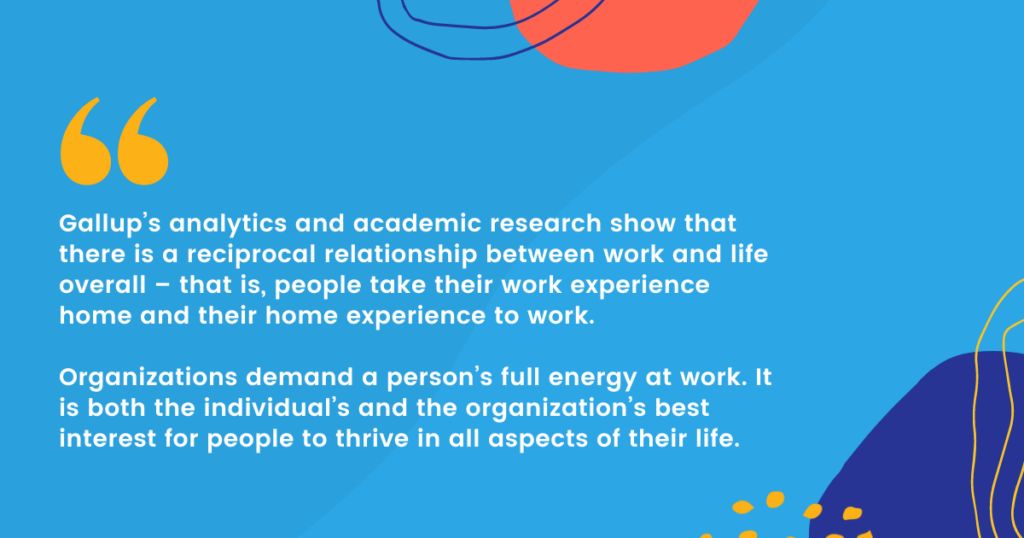Last year when a Canadian accountant was ordered to pay back over $2,000 to her company for time theft, it seemed like a big win for employee monitoring software . Thanks to this growing technology, her employer had records showing over 50 hours worth of discrepancies between what she reported working and what was actually logged by the system.
Employee monitoring software — also known as bossware — tracks employee work hours, activity levels, and productivity. It can provide valuable insights into employee behaviour — but there is one problem. This tool, which was built to enhance the world of remote work, is not flexible enough to accommodate individual work styles and scenarios. When the previously mentioned accountant was confronted, she shared important details like technical issues and offline work that interfered with the accuracy of the bossware data used against her.
The Negative Impact of Bossware
This type of technology can break down trust between employees and their leaders, leading to feelings of anxiety and micromanagement. Bossware also results in decreased morale and motivation, as employees feel like their work is not valued or respected.
Technology such as bossware can seem like a quick fix for boosting productivity and ensuring efficient work processes, but we believe there is another approach that leaders can try to promote employee satisfaction and success that is both sustainable and effective: creating a culture that supports employee wellbeing.
Why a Culture of Employee Wellbeing can be More Effective than Bossware

A culture of wellbeing is a management style that prioritizes the physical, emotional, social and intellectual wellbeing of employees and creates a supportive and inclusive work environment. This type of culture is centered around the idea that employees are valued as individuals and their health and happiness are a priority for the organization.
Leadership is about influencing people to achieve common goals. Those who prioritize providing opportunities for personal and professional growth, fostering a sense of community, and promoting a healthy work-life balance over employee monitoring will see a range of benefits which include:
1. Increased Employee Satisfaction and Retention
Creating a culture of wellbeing promotes employee satisfaction and reduces turnover. Employees who feel valued and respected are more likely to be engaged, motivated, and productive. They are also more likely to stay loyal to their organization. In contrast, using bossware without first creating a culture that promotes trust and wellbeing can lead to high levels of stress, burnout, and dissatisfaction, which leads to high turnover rates and increased recruitment and training costs.
2. Improved Employee Health and Wellbeing
Employees who work in environments that prioritize well-being have lower levels of stress, anxiety, and depression, which contributes to improved work performance and increased job satisfaction. In contrast, a bossware approach in a workplace culture that lacks trust and wellbeing results in increased levels of stress and burnout, which further impacts employee wellbeing.
3. Increased Collaboration and Innovation
When employees feel valued and supported, they are more likely to be creative, take risks, and share their ideas. This creates a more dynamic and innovative workplace! In contrast, bossware can stifle creativity and collaboration; a “big brother” environment can make employees afraid to speak up or share their ideas for fear of retaliation.
4. Better Decision Making
Employees who feel valued, trusted and respected are more likely to be engaged, motivated, and productive. They are more likely to provide valuable input and insights, which can lead to better decision-making. In contrast, the bossware approach can lead to a lack of trust and collaboration, which can result in poor decision-making.
5. Increased Employee Engagement
Finally, employees who feel valued and respected are more likely to take pride in their work and feel a sense of ownership and responsibility for the organization’s success. These employees are great collaborators! In contrast, bossware may lead to low levels of engagement and motivation, as employees may feel disrespected and undervalued.
Bossware may seem like a quick fix for improving productivity, but a culture of wellbeing is a more impactful and sustainable approach to promoting employee satisfaction and success. A culture of wellbeing prioritizes the physical, mental, and emotional well-being of employees, encouraging them to feel valued and supported in their work. This type of culture fosters a positive work-life balance, reducing stress and burnout, and improving overall job satisfaction. When employees feel supported and fulfilled, they are more likely to be engaged in their work, leading to higher levels of productivity and motivation.

How to Make it Happen
Teams who develop a series of practices, habits and rituals that prioritize employee wellbeing are more likely to sustain high performance and collaboration while being equally happy with work and life! To create a sustainable culture of wellbeing, leaders must work with their teams to get individual commitment to wellbeing habits while reaffirming them of the company’s commitment to the cause. It’s a tall order for leaders to take responsibility for the wellbeing of others…and that’s why leaders need to prioritize their own wellbeing first.
Leaders who prioritize their own wellbeing set an example for others, creating the roots for a positive and healthy organizational culture. Aside from seeing their own performance increase, leaders with healthy wellbeing routines also form better relationships and are easier to approach. Their practices make them more self-aware and in tune with their emotions — making them better equipped to navigate challenges, foster innovation, and drive positive results.
So, where to start?
Putting Leaders First: How to Take Care of Yourself AND Your Team is a FREE one-hour workshop, expertly facilitated by our CEO, Ginny Santos, to get you building the individual habits and practices that elevate your own wellbeing. You will:
- Gain clarity on how team wellbeing increases engagement, collaboration and productivity
- Discover what’s working for other leaders of hybrid/remote teams
- Explore six areas of self-care plus six areas of collective care
- Discover a proven approach to building a workplace culture that prioritizes wellbeing
The workshop will be held Thursday, February 23 from 12 – 1 pm EST on Zoom.
By Crystal Morris, Digital Marketing & Virtual Office Coordinator, Neolé Inc.







